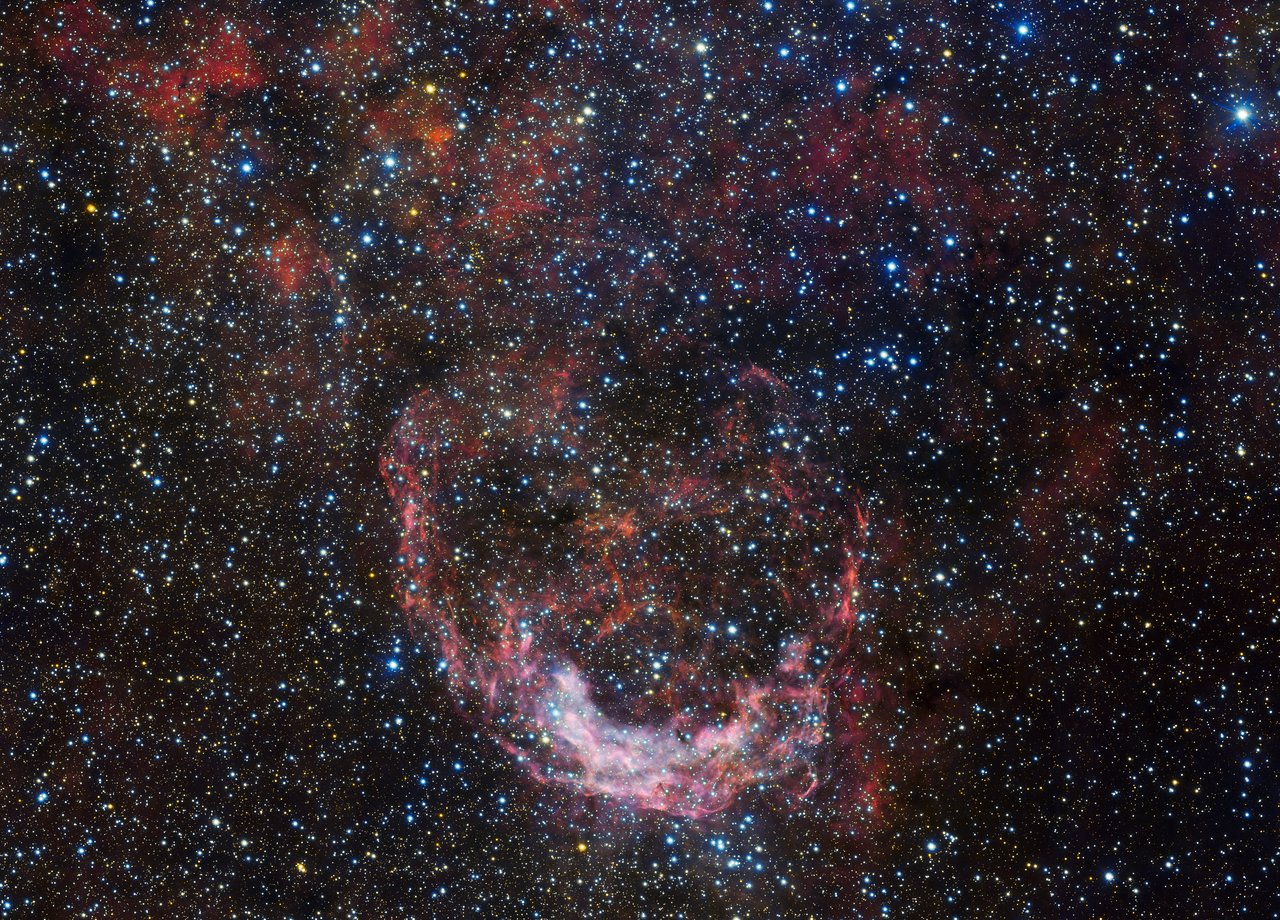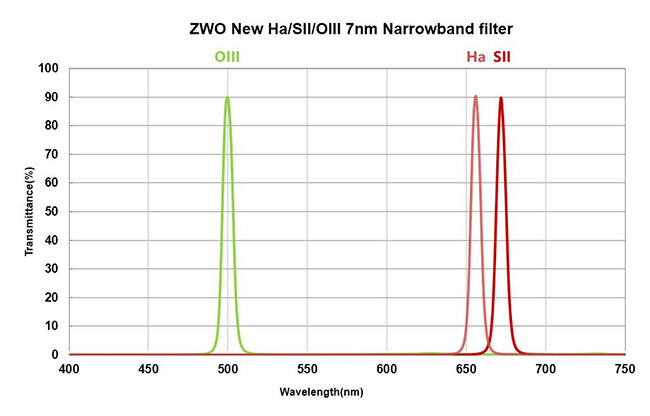Sa Ji Tario wrote: ↑Thu May 06, 2021 2:12 pm
Ann, does the narrow band not modify the star colors?
Let me try to explain a little.
The human eye has three color-sensitive cones, or receptors, blue, green and red, in our retinas. In order to get "true-color" images, RGB (Red, Green, Blue) imagery is preferred, as it reacts to color in a relatively similar way to the human eye. RGB photos are usually achieved by using red, green and blue broadband filters.
The OIII narrowband filter detects wavelengths around 501 nm. The Hα filter detects a wavelength of 656 nm, and the SII filter detects a wavelength of 658 nm.
As you can see from the illustration, 501 nm looks definitely green to most people. 656 nm, as in Hα, and 658 nm, as in SII, look absolutely identical to the human eye, and both look extremely red to us.
So OIII, Hα and SII filters really correspond to two colors visible to the human eye: green and red. But we humans prefer three-color images, because we have three different color receptors in our eyes. And anyway, what would be the point of taking pictures of deep space objects through both Hα and SII filters and then show both the Hα and the SII filter images as bright red, as they would appear to the eye? It would be impossible to tell the Hα and the SII features apart, if they both looked the same shade of bright red!
That is why narrowband images are made using false (or mapped) color. The green OIII features are typically mapped as blue, Hα is mapped as green and SII is mapped - make that shown - as red.
In reality, OIII is not blue - certainly not deep blue - and Hα is absolutely not green. Never!
Not only are the filter images mapped to colors that don't correspond to reality, but if I'm not mistaken, Hα, which is normally so dominant in nebulas, is often made to look fainter, so that the other two wavelengths can "shine". In other words: A nebula that looks very red from Hα in RGB photography is usually not going to look very green in narrowband photography, even though Hα is typically mapped as green. Hα is typically "played down" in narrowband photography, and OIII and SII are enhanced and made brighter.
Note how the color of the nebula changes in narrowband images. But also note how the color and brightness of the stars change in this kind of photography.
Ann
 Windblown NGC 3199
Windblown NGC 3199




